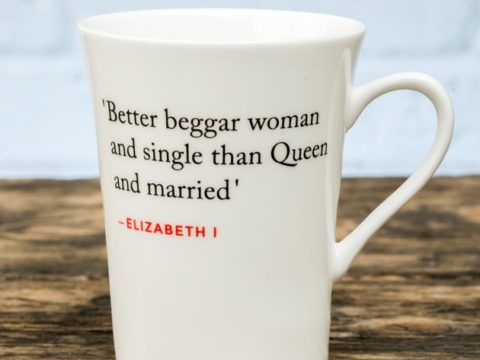Robert Dudley: Life Story
Chapter 4 : Slander
It would have been questionable enough for Elizabeth to be flirting with a single man of high birth, for her to be flirting with one who was known as the son and grandson of a traitor, and who was already married, gave rise to scandal.
Amy was not invited to join the court, or given a place amongst Elizabeth’s ladies. Instead, she remained in the country, travelling between the houses of friends or clients of Robert. There are various notes in Robert’s accounts for her clothes, her horses, her apothecary’s bills, and carriages. Amy was not the only wife of a courtier to live away from court. Other than roles as ladies of the bedchamber or maids-of-honour, there were no public positions for women, and Elizabeth largely drew her attendants from amongst her Boleyn relatives. One exception to this was Robert’s sister, Lady Mary Sidney, who was close to the queen, and who naturally encouraged her brother’s promotion.
Nevertheless, Robert was not to have it all his own way – when Elizabeth discovered that he was trying to control access to her by bullying the usher who guarded the entrance to her Privy Chamber, she was incandescent with rage ‘if you think to rule here, I will take a course to see you forthcoming [ejected]. I will have here but one mistress, and no master,’ she told him, furiously.
But her anger with Robert soon faded - apart from anything else, he was one of the few men whose skill in the dance matched her own.
There was increasing pressure on the queen to marry, to settle the dispute over a legitimate heir, by her producing a child of her own. Mary, Queen of Scots was thought by many to be the right heir, as descended from the eldest daughter of Henry VII, whilst others, including Sir William Cecil, preferred Lady Katherine Grey, descended from Henry VII’s younger daughter, but born in England, and, after a brief acceptance of Catholicism under Mary, back in the Protestant fold. The Grey family had also been nominated in Henry VIII’s will, above the Scottish line. But far preferable would be an heir of the queen’s own body.
Elizabeth showed little sign of wishing to marry. She listened to petitions on the subject, sent positive messages of interest to prospective candidates, but took no concrete steps. Of course, even if Elizabeth had been willing to marry, the same arguments that had dogged her sister would have revived – whether she married a foreigner or to a native Englishman, at least half her subjects would have disapproved of her choice.
Before long, however, it was whispered that it was her love for Robert that was impeding a proper resolution of the matter. His appointment to the Order of the Garter in April 1559 was seen by the Count de Feria, still on embassy in England, as an indication of where Elizabeth’s favour lay. It was felt by many to be an honour way beyond his deserts, and some of Elizabeth’s nobles began to resent him.
A particular enemy was Thomas Radcliffe, 3rd Earl of Sussex, who disparagingly referred to Robert, on account of his dark complexion as ‘The Gipsy’. Sussex was married to Frances Sidney, sister of Robert’s own brother-in-law, Sir Henry Sidney, but he was descended from the Dukes of Buckingham and Norfolk, and considered himself to far outrank Robert.
His other chief opponent amongst the nobles was Thomas Howard, 4th Duke of Norfolk, who, as the senior nobleman at court and the queen’s maternal relative, no doubt felt that it was he who should have been her right-hand man. In the autumn of 1559 the Spanish ambassador de la Quadra wrote home that there was a plot by Norfolk and Sussex to murder Robert. Robert himself believed it and had taken to wearing a jacket of chainmail underneath his outer clothing. Elizabeth dealt with Norfolk by giving him the position of Lieutenant-General of the North - an honour which he could hardly refuse but which took in far from the Queen’s side.
Others of the nobility were willing to work with Robert – no doubt thinking it better to please the Queen’s favourite than to quarrel with him. Amongst those who gave him gifts were his brother-in-law, the Earl of Huntingdon, and the Earls of Westmorland and Bedford.
Robert’s influence was well-known, and he was much courted by those who wished him to make recommendations to the Queen about positions or gifts. To ask favours on behalf of clients or friends was a perfectly normal practice, and unless outrageous sums changed hands, or the applicant was clearly unfitted to the role requested, no-one considered this type of ‘good-lordship’ to be corrupt. Robert was assiduous in helping those who requested his favour, and soon built up a network of supporters and associates.
Throughout 1559, Robert was constantly at the Queen’s side and gossip spread, especially as Robert’s wife was never present. It began to be rumoured that Amy was sick – both the Spanish and Venetian ambassadors relayed stories of a ‘malady in her breast’ - and that Elizabeth and Robert were anticipating her early death so that they could marry.
Robert did not completely ignore his wife - he paid her a visit of some ten days duration at Easter, back at Throcking, and she also visited London during that summer – the Spanish ambassador reported that she was cured of her earlier illness, but was being careful as to what she ate: perhaps a hint that she feared poison.
Lord Robert Dudley
Family Tree


